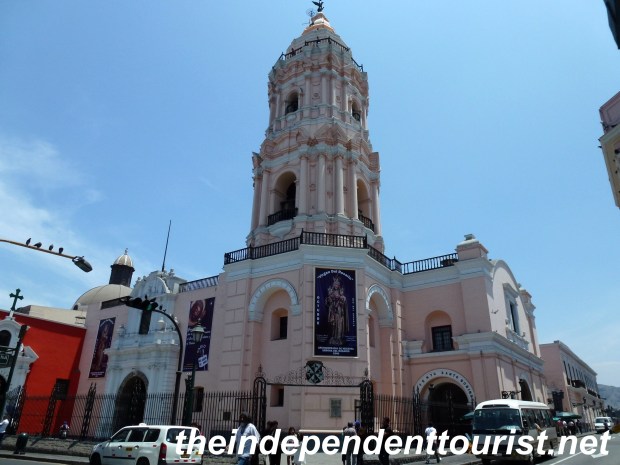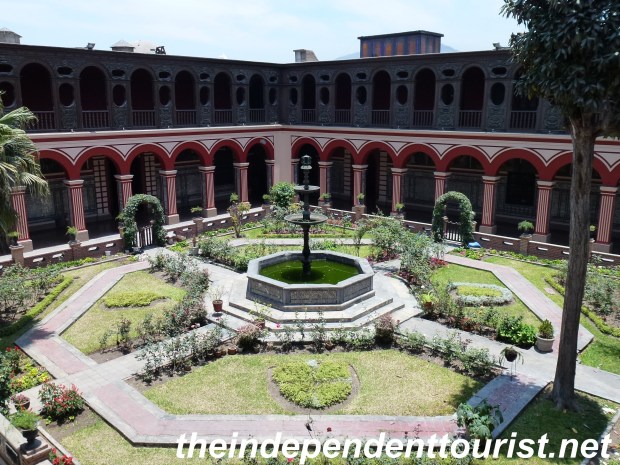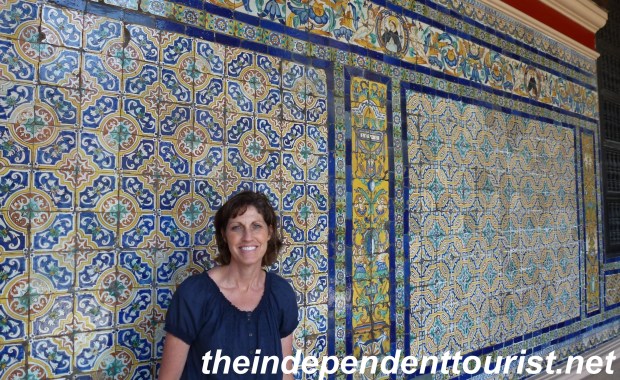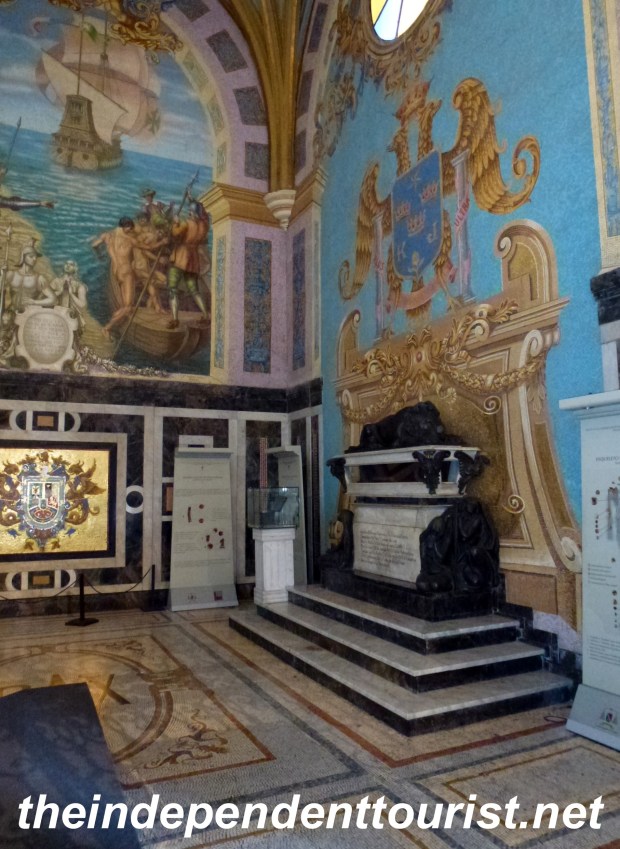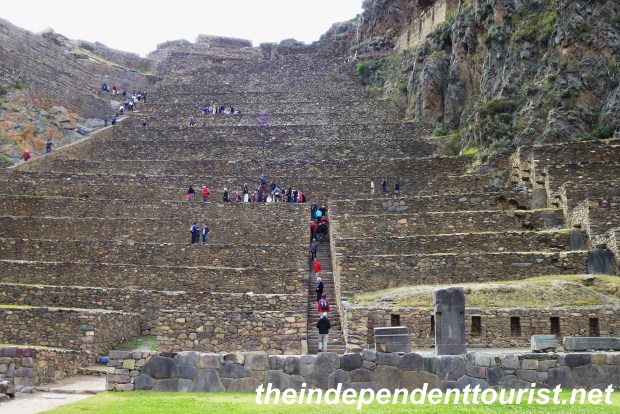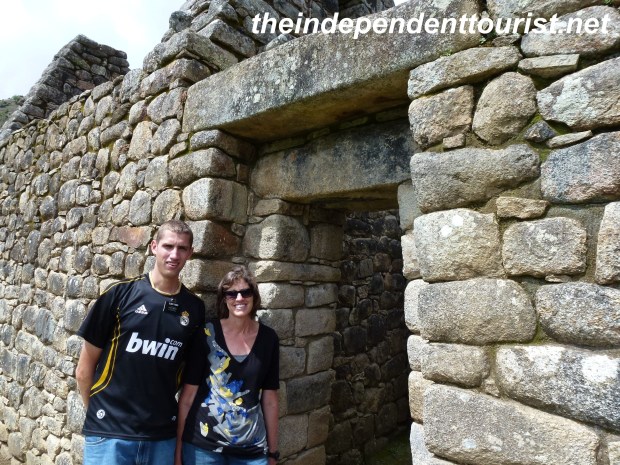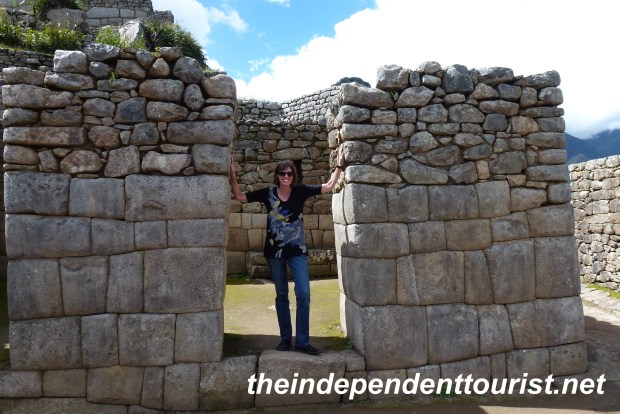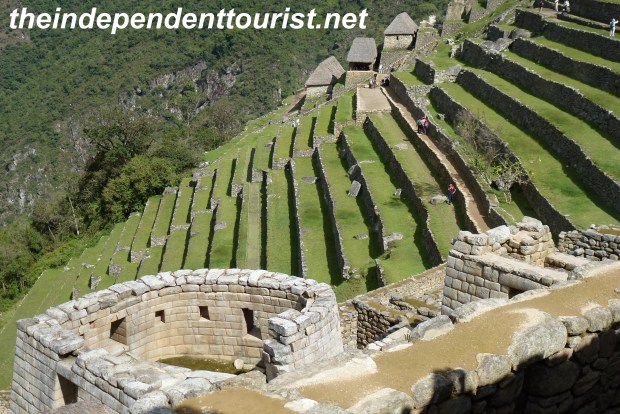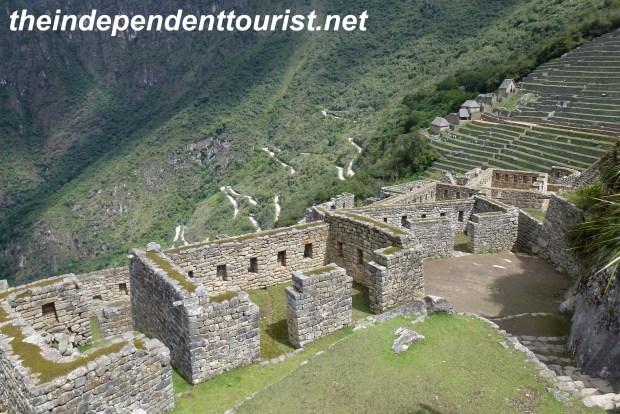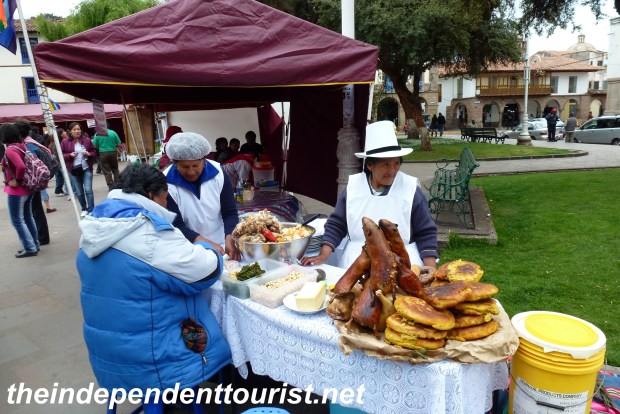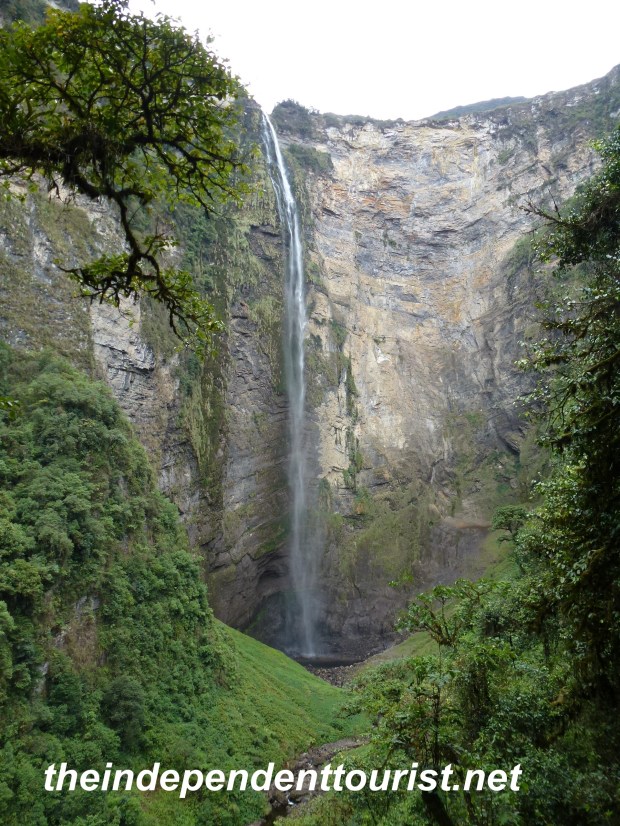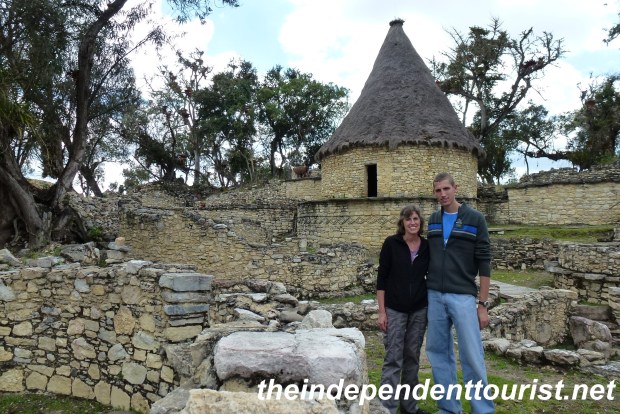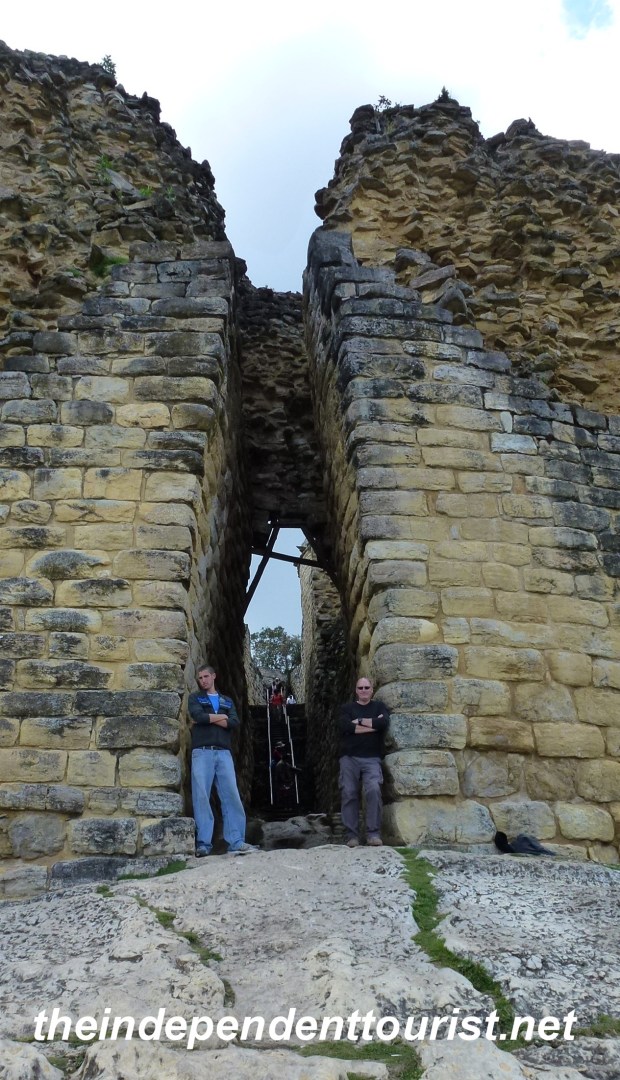
The approximate train route from Cuzco to Machu PIcchu
Most people visit Peru for one reason, to see the Inca site of Machu Picchu. We visited in October 2011, and I can say, having visited many of the world wonders, it is one of the most stunning sites in the world, for both the ruins and the natural scenery. However, be aware that it is expensive to visit and a bit more difficult to do so without crowds. Given the timing of our trip, we had to follow the typical tourist visit approach, which is: take a morning train from Cuzco (actually Poroy), then a bus shuttle up to Machu Picchu from the last train stop, and then the bus shuttle and train again back to Cuzco. We had about 3 ½ hours at the site, which was long enough for a good visit of the main ruins.

Poroy Train Station
I hope my comments on visiting will be helpful:
Cost: Visiting Machu Picchu from Cuzco is not cheap. Total costs will be about $200/person, including a taxi to Poroy train station from Cuzco, using the least expensive train, and the entrance fee. See below for more details. ($1 USD = 2.8 Nuevo Soles.)

Boarding our train to Machu Picchu
Trains. The only way to get to Aguas Calientes (the small town just below Machu Picchu) is via train. The road ends in Ollantaytambo. There are 3 train options: a)“Expedition” formerly called the “Backpacker;” b) Vistadome; and c) the extremely expensive Hiram Bingham (about 4x the cost of the other trains). All trains leave from Poroy station, about a 15 minute taxi ride up a steep hill north of Cuzco (taxi cost was 15-40 NS each way depending on your bargaining skills). We took the Expedition train to Aguas Calentes and the Vistadome on the return trip, to have the experience on each of these trains. The Expedition train cost about $55 US per person (one way), and is very decent. The seats are reasonably comfortable, but since you are facing another pair of seats across a table, the legroom is so-so. The Vistadome costs about $75 US (one way) per person and the seats and legroom are much more comfortable. They also provide little snack on this train and a small fashion show (of course encouraging you to buy the items showcased). The Hiram Bingham train comes with lavish meals and luxury seating. The train trip takes about 3 hours. Purchase your tickets well ahead of time. In October, we bought ours just two days prior to our visit (at the Peru Rail kiosk in the Lima airport) and our train options were more limited, due to many seats being already full. Visit Peru Rail for more information.

View of the Sacred Valley on our train ride to Machu Picchu
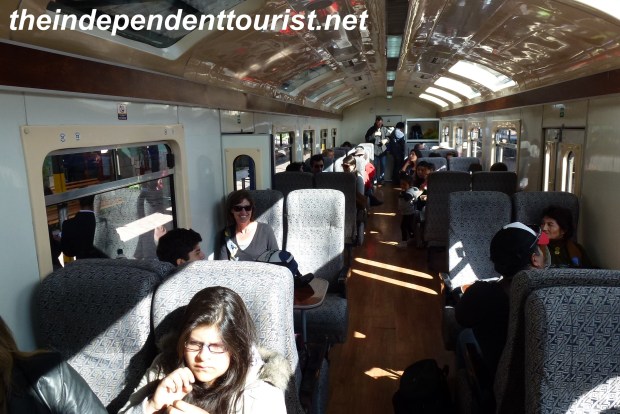
The Expedition Train

The Vistadome Train
While there are different times for train departures (although the schedules are pretty similar), ours left Poroy at about 7:30 am, and arrived at Aguas Calientes at about 10:45 am, with one short stop in Ollyantaytambo. Our return train left about 4:45pm.
Machu Picchu site tickets. Tickets must be purchased ahead of time, they are not available at the site entrance, although I understand they can be purchased in Aguas Calientes. We bought ours in Cuzco the day before our visit. The tickets are about $60 per person; they are valid for one day only.
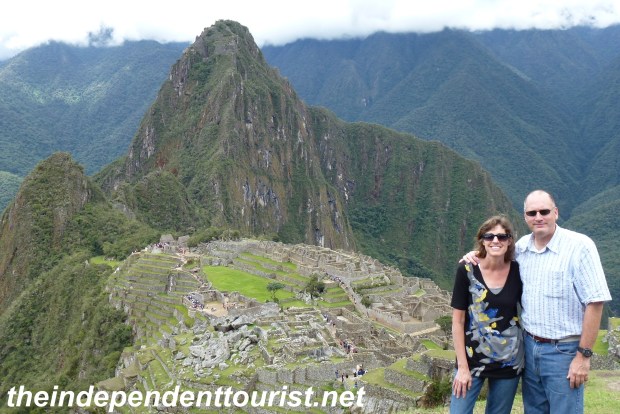
View of the ancient city of Machu Picchu
Shuttle bus from Aguas Calientes to Machu Picchu. After getting off the train in Aguas Calientes, you wind through a series of tourist/trinket stalls, and make your way over to the shuttle bus departure point. The shuttle buses leave more or less continually with the arrival of the trains, and cost 40 NS (about $14 per person) for the round trip. The shuttle bus takes another 20 minutes to climb the narrow switch backs up to the entrance to Machu Picchu. One can also walk up (and down) the winding, steep dirt road to the site entrance. We wanted to save our energy for hiking at the site itself. Even in October, Machu Picchu was filled with tourists.
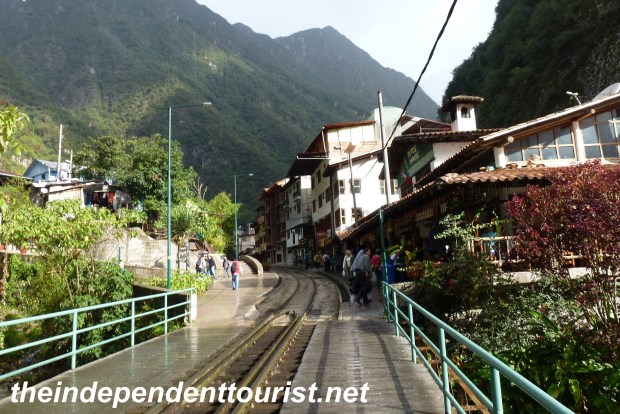
The town of Aguas Calientes, the end of the train tracks, at the base of Machu Picchu
I was a bit surprised how busy it was, even well after the northern hemisphere summertime. From what I have heard, the only relatively quiet times at Machu Picchu are January/February, which is the height of the rainy season. We had good weather the day of our visit.
Waynapicchu (aka Huayna Picchu)
The ideal visit to Machu Picchu would include hiking up to Waynapicchu (the steep mountain behind the main site), for the ruins on this peak and the views. But to do so requires getting to Aguas Calientes the night before. The only times allowed to hike up to Waynapicchu are at 7 and 10 am, and the number of visitors is limited to 200 for each time slot. As of now, the only tourist trains leave Cuzco in the morning, so a day would be spent lounging in Aguas Calientes in order to get into Machu Picchu first thing the following morning for the hike to Waynapicchu.
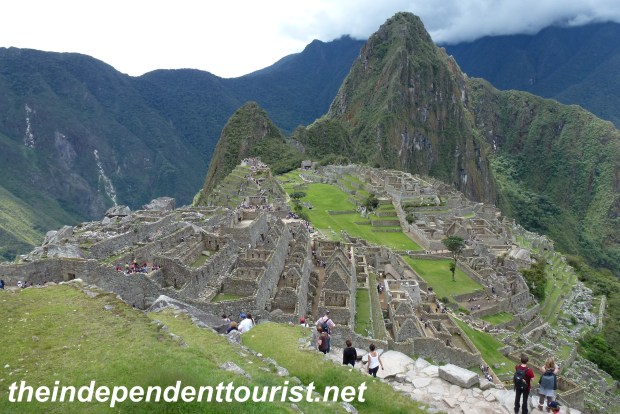
Waynapicchu is on the peak directly behind the city of Machu Picchu
Rather than traveling all the way by train from Cuzco to Aguas Calientes, it is possible to get on the train at Urubamba (new stop) or Ollantaytambo, which would be a shorter trip, by driving to these towns in the Sacred Valley. Both towns have hotels. Ollantaytambo has some interested Inca ruins also, and is the starting point for the Inca Trail, a whole other way to see several others sites and to see Machu Picchu.
Other Tips:
- Buy a good guidebook on Machu Picchu, and explore on your own, you will see more and will learn as much. There is only so much information known about the Inca, and a guidebook will cover the key points and main historical spots. In addition, there are small guidebooks available for purchase at the entrance which we found useful.
- Right after the main entrance, turn left and follow the path up the hill for a great, classic overlook to the main city (designated as the “long route”, one of several main routes through the site). This path also goes by where the Inca trail joins the main site.
- The main site is most crowded in the public building areas, which are on the left-hand side as you enter and overlook the main city. The right side, which is mostly a housing area, seemed to have far fewer visitors and provides some beautiful overlooks to the valleys below and the mountains surrounding the site.


















